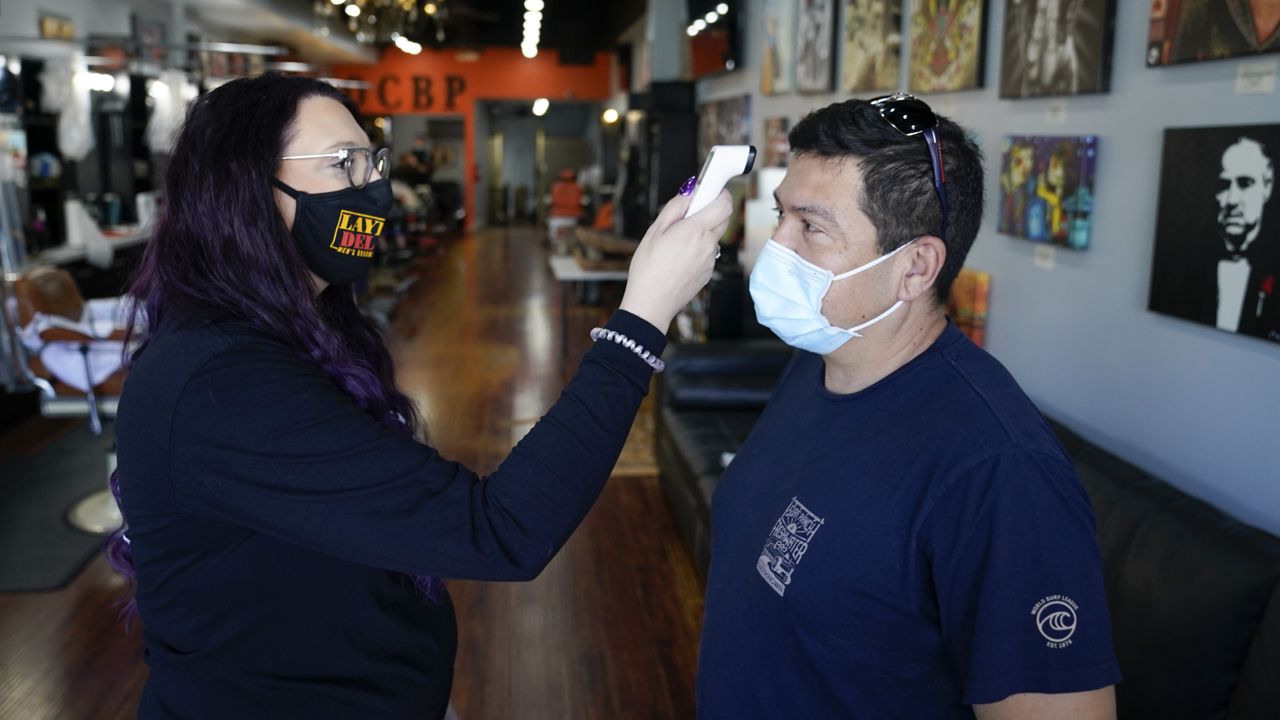SANTA ANA, Calif. — Orange County is expected to remain in the red tier this week despite a rise in coronavirus cases, but next week it is likely to fall back to the most restrictive purple tier if the trend continues, Orange County CEO Frank Kim said Monday.
The county reported 308 new cases of COVID-19 Monday, but no additional deaths, bringing the county's cumulative case total to 62,563 and leaving the death toll at 1,509.
"We're going to still be in the red tier tomorrow," Kim told City News Service. "The data for next Tuesday, though, shows we're right on the edge. Unless something changes, we risk the purple tier next Tuesday."
Officials say the daily average of new cases would have to come down to about 130 for Orange County to make it to the orange tier, allowing for more businesses to reopen and for some already open to increase their capacity.
The number of hospitalizations related to the virus inched up from 201 Sunday to 205 Monday, with the number of intensive care unit patients rising from 72 to 76, according to the Orange County Health Care Agency.
The change in the three-day average of hospitalized patients went from 7.4% to 12.7%. The county has 31% of its intensive care unit beds and 65% of its ventilators available.
According to OCHCA data, 1,190,732 COVID-19 tests have been conducted since the start of the pandemic, including 7,148 reported Monday. There have been 55,063 documented recoveries.
The county's positivity rate, which is reported each Tuesday, but was reported Wednesday last week because of the election, rose from 3.2% to 3.6%, and the daily case rate per 100,000 population increased from 5.1 last week to 6.
The county's Health Equity Quartile Positivity Rate, which measures a county's response to virus hot spots, decreased from 6% to 5.7%. The county has to reach at least 5.2% in that metric to move into the orange tier from the red tier.
Kim said it has been difficult for contact tracers to pinpoint a specific reason for the rise in cases. Kim reiterated that Orange County faces the same situation as other counties in the Southland grappling with a rise in infections.
"If you look at the industries — essentially the estimated infections that occur from indoor malls or schools or in-restaurant dining —we're not seeing any trend there," Kim said.
Officials are concerned that shutting down more commerce with a reversion to the purple tier would not address the source of the spread, but would have a corresponding negative effect on the economy, Kim said. "But the state so far has not accepted those arguments," he said.
Kim said he was "really excited" about Pfizer's announcement on Monday that it has developed a vaccine that is 90% effective and will be available soon.
"If it's true that it's 90% effective that's wonderful," Kim said.
Kim noted that Pfizer's vaccine is similar to others under development.
"That gives us hope that in two or three months when the vaccines are more widely available that we'll be able to bend the curve on the number of deaths, because that's the biggest concern we have," Kim said.
Reducing fatalities will make it easier to reopen more commerce without fear of a rise in deaths, Kim said.
County officials have traced a handful of infections to students returning to campus at UC Irvine, but not anywhere near the hundreds of students infected at other universities.
One of the peskiest issues county officials have been dealing with is socializing among teens and young adults.
"It's a major issue," said Dr. Matthew Zahn, medical director of the county's communicable disease control division. "I think our biggest goals, our most consistent goals, is reaching out to these populations."
Zahn said efforts are being made to reach out to students on campuses to reinforce the importance of social and physical distancing and mask usage. He said that often, however, on a campus or at a workplace, there is more mindfulness of social distancing, but not so much after class or work.
"The natural human habit is to let their guard down in social settings," Zahn said. "And it's the social settings where so much spread happens."
Health officials have been warning of a potential rise in cases during the holidays as residents seek to fraternize more and stay inside more often because of the changing weather.
"There seems to be an inevitability over the next couple of months," Zahn said. "But it's important we don't let our guard down."
Zahn advised residents to celebrate the holidays in a different way than usual "because there is a risk there" of spreading the virus with family get-togethers.
He also commented on increasing youth sports activities in which parents and children are traveling out of states for competitions. He said the traveling back and forth isn't so much a concern, but the "crowding" that sports contests encourage "is a major driver of risk."
When asked about a swim meet in Irvine last weekend, Zahn said he wasn't aware of it, but was concerned the organizers had not reached out to the agency for guidance.



